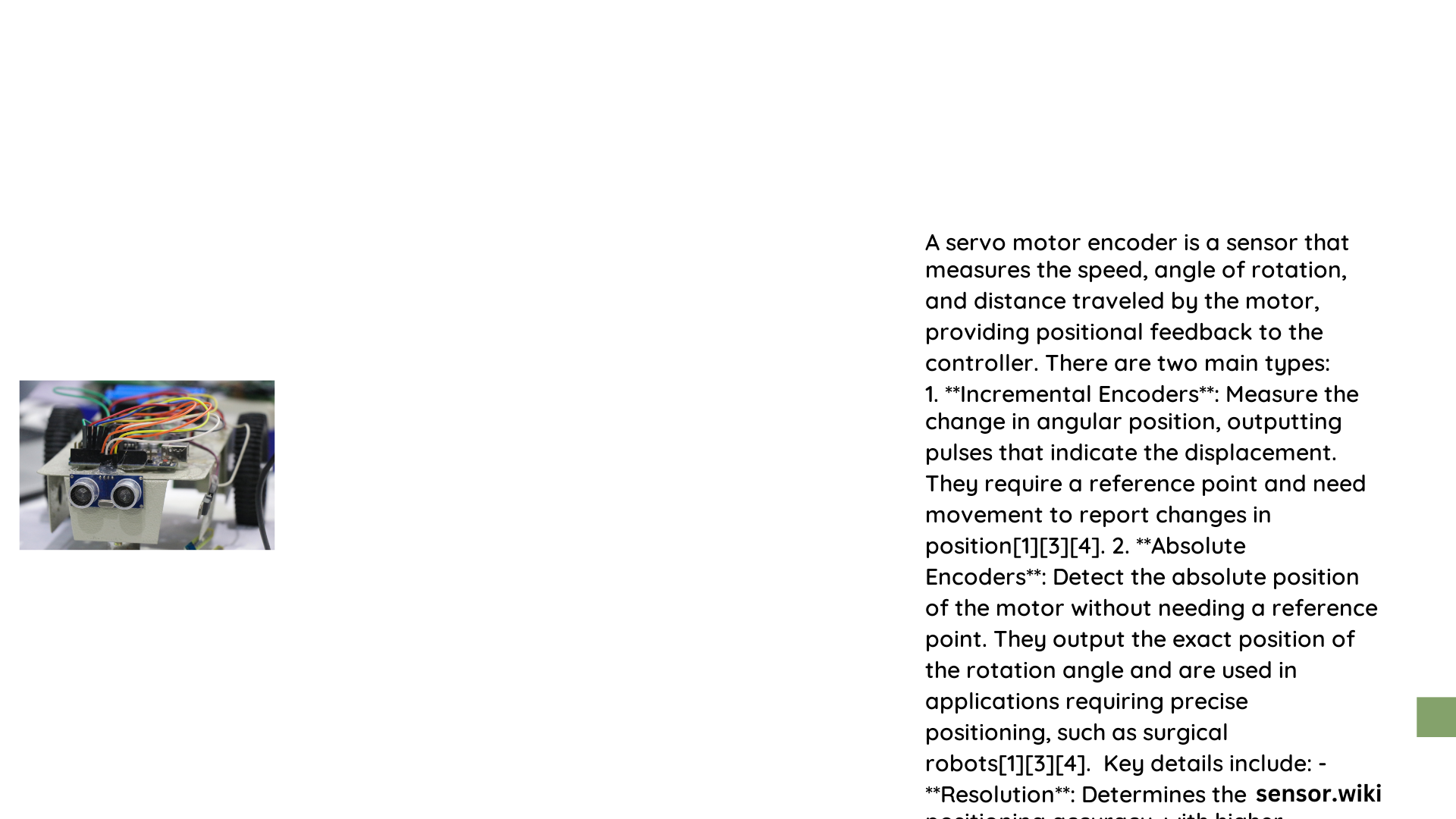Sensor encoder servos represent a critical technological interface in modern motion control systems, combining sophisticated position sensing with precise servo motor performance. These advanced electromechanical devices integrate high-resolution encoders with servo motors, enabling unprecedented accuracy and feedback in complex industrial and robotic applications. By translating mechanical motion into precise electrical signals, sensor encoder servos facilitate real-time position tracking, speed control, and dynamic performance optimization across diverse technological domains.
What Are Sensor Encoder Servos?
Sensor encoder servos are sophisticated electromechanical devices that combine servo motors with integrated position-sensing encoders. These systems provide precise motion control by continuously monitoring and reporting the motor’s exact position, speed, and rotational characteristics.
Key Components of Sensor Encoder Servos
| Component | Function | Typical Specifications |
|---|---|---|
| Encoder | Position Tracking | 18-bit to 23-bit resolution |
| Servo Motor | Motion Generation | 0.46 to 33 N·m continuous torque |
| Feedback Mechanism | Signal Translation | Incremental or Absolute |
How Do Sensor Encoder Servos Work?

Position Detection Mechanism
Sensor encoder servos operate through a sophisticated feedback loop:
- Motor receives electrical command signal
- Encoder continuously tracks shaft position
- Feedback signal sent to control system
- System adjusts motor performance in real-time
What Are the Primary Applications?
Robotics Performance
In robotic systems, sensor encoder servos enable:
– Precise joint movement
– Dynamic trajectory tracking
– Consistent repeatability
– Minimal positional error
CNC Machinery Precision
CNC applications leverage sensor encoder servos for:
– Tool positioning accuracy
– Complex machining operations
– High-speed material processing
– Minimal geometric deviation
What Technical Specifications Matter?
Resolution Characteristics
- Single-Turn Resolution: 262,144 counts per revolution
- Multi-Turn Resolution: Up to 8,388,608 counts per revolution
- Maximum Operating Speed: 8000 rpm
- Torque Range:
- Continuous: 0.46 to 33 N·m
- Peak: 1.33 to 79 N·m
How to Integrate Sensor Encoder Servos?
Communication Protocols
Successful integration requires understanding:
– SPI communication interfaces
– I2C protocol compatibility
– Digital signal processing
– Real-time control algorithms
What Calibration Procedures Ensure Accuracy?
Calibration Steps
- Initial system configuration
- Reference point establishment
- Position verification
- Fine-tuning encoder settings
Challenges in Sensor Encoder Servo Implementation
Performance Limitations
- Environmental interference
- Mechanical misalignment
- Software compatibility issues
- Thermal expansion effects
Advanced Considerations
Future Development Trends
- Increased resolution
- Miniaturization
- Enhanced signal processing
- Improved environmental resilience
Conclusion
Sensor encoder servos represent a pinnacle of precision motion control technology, bridging mechanical movement with digital intelligence across multiple industrial domains.
